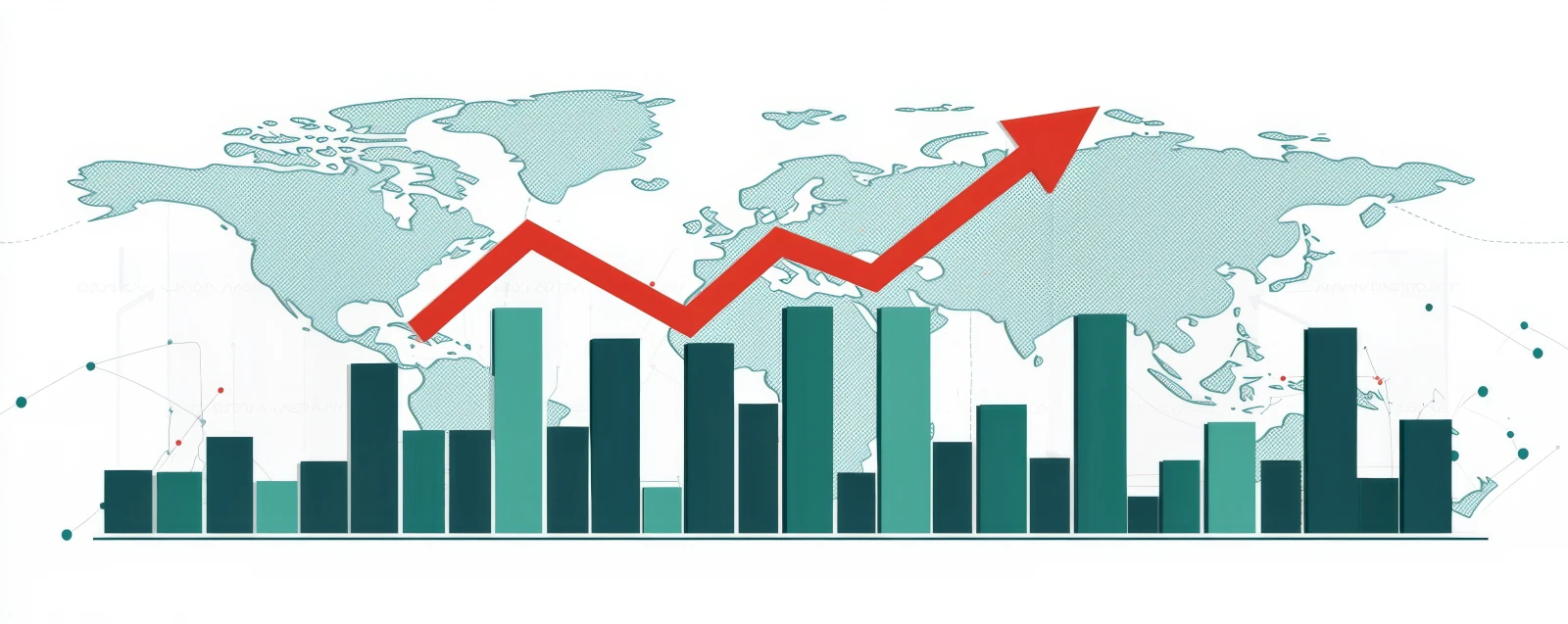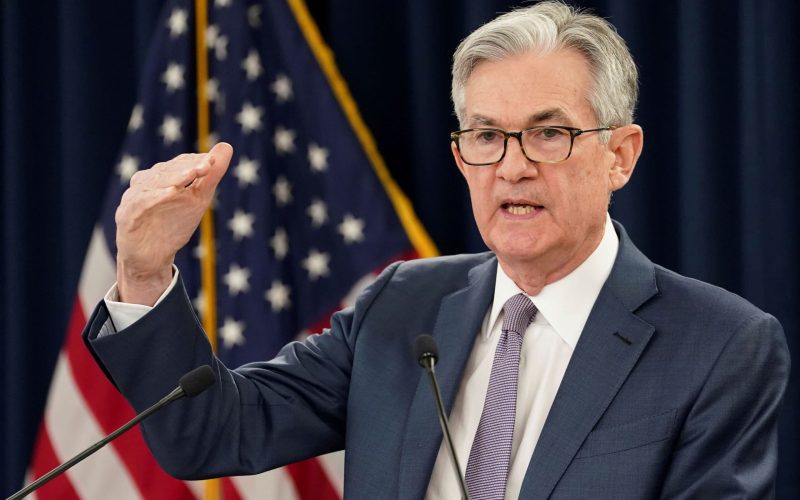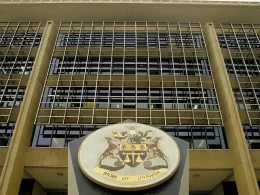Federal Reserve Survey Finds Inflation Fading: Rising Concerns Over Debt and Trade Wars
The U.S. economy is undergoing a significant transformation as inflation, which was once the most pressing economic challenge, begins to ease. The Federal Reserve’s latest survey on economic conditions reveals that inflationary pressures are fading, bringing some much-needed relief to households and businesses alike. However, this shift in economic conditions has brought to light new concerns. As inflation cools, the U.S. faces rising risks related to national debt and trade wars. These risks, while less visible than inflation, have the potential to destabilize the economy in the long run.
This article examines the key findings of the Federal Reserve’s survey on inflation, the factors contributing to its decline, and the emerging economic risks posed by the nation’s rising debt levels and escalating trade tensions. We will explore the potential implications of these challenges for the broader economy and discuss the role of policymakers in managing these complex issues.

The Federal Reserve’s Survey on Inflation: Key Insights
The Federal Reserve’s most recent economic survey paints a picture of a changing economic landscape. Inflation, which surged to alarming levels in 2021 and 2022, has begun to retreat. According to the Federal Reserve’s findings, the Consumer Price Index (CPI) has experienced a notable deceleration in recent months. While inflation remains above pre-pandemic levels, it is no longer the runaway issue it once was, thanks to a combination of factors.
Key data points from the Federal Reserve’s survey show that inflation, which peaked at around 9.1% in June 2022, had fallen to approximately 4.0% by mid-2024. The primary drivers of this decline include a stabilization in supply chains, falling energy prices, and aggressive monetary tightening by the Federal Reserve. As a result, the overall cost of living has moderated, giving consumers and businesses some breathing room after a period of price increases that impacted everything from groceries to housing.
Understanding the Factors Behind Inflation’s Decline
To understand why inflation is fading, it’s important to examine the factors that contributed to its earlier rise and how they have shifted. Inflationary pressures were the result of both supply-side and demand-side factors, many of which were tied to the unprecedented nature of the pandemic and its aftermath.
1. Supply Chain Disruptions: During the COVID-19 pandemic, global supply chains were severely disrupted. Lockdowns, labor shortages, and factory shutdowns created a backlog of goods, driving up prices. The Federal Reserve’s survey highlights that these disruptions have largely been resolved, with factories and ports returning to normal operation. Shipping delays have been reduced, and businesses are once again able to meet consumer demand without the same level of bottlenecks that characterized the peak of the pandemic.
2. Energy Price Volatility: Energy prices, which are a key component of inflation, saw dramatic fluctuations during the pandemic and the early stages of economic recovery. The war in Ukraine, along with supply chain disruptions, caused global oil prices to surge, which in turn impacted prices for everything from gasoline to home heating. However, recent price stability in oil and natural gas markets has contributed to lower energy costs, which have helped to bring down overall inflation. This stabilization is a key factor in the Fed’s assessment of inflation as fading.
3. Aggressive Monetary Policy by the Fed: In response to inflationary pressures, the Federal Reserve implemented a series of interest rate hikes, which were designed to curb demand by making borrowing more expensive. These rate hikes have had a substantial impact on consumer behavior, slowing down spending on big-ticket items like homes and cars, which are often financed through loans. The central bank’s aggressive tightening policy has had its desired effect: it has cooled off demand-driven inflation, particularly in housing, durable goods, and consumer credit.
4. Labor Market Resilience: While the labor market has remained strong, it has not experienced the kind of wage-price spiral that often exacerbates inflation. The U.S. economy has added millions of jobs since the pandemic’s peak, and wage growth has remained relatively stable. This has helped prevent further inflationary pressures in the economy, as workers’ paychecks have not skyrocketed to the extent that would drive up the cost of goods and services.

The Fed’s Risk Assessment: Debt and Trade Wars
As inflationary concerns fade, the Federal Reserve’s attention is turning to other emerging risks that could disrupt economic stability in the coming years. Two such risks—rising national debt and the ongoing trade wars—are becoming focal points for economic discourse. These issues are intertwined, with each posing its own set of challenges for U.S. and global markets.
1. Rising National Debt:
The U.S. national debt has ballooned in recent years, reaching a staggering $33 trillion in 2024. The government’s increasing reliance on borrowing to fund deficits, particularly following the pandemic stimulus programs, has raised concerns about the sustainability of fiscal policy. The Federal Reserve’s survey highlights that the growing debt burden is one of the most pressing long-term risks to the economy.
The effects of rising national debt are multifaceted. First, the interest payments on this debt consume an ever-growing portion of government revenue. As interest rates rise, the cost of servicing the debt increases, putting additional strain on the federal budget. In some estimates, the U.S. could soon be spending more on debt servicing than on discretionary programs like defense and infrastructure.
Second, the rising debt level threatens to reduce the government’s flexibility in responding to future economic crises. As more funds are directed toward paying interest, fewer resources are available for investments in public goods, healthcare, education, or emergency stimulus programs. This could result in slower economic growth, as the government has less ability to stimulate the economy during downturns.
Lastly, there is the risk of eroding investor confidence in U.S. debt. If investors perceive the U.S. as being unable or unwilling to manage its debt, they may demand higher interest rates to compensate for the perceived risk. This could create a vicious cycle where rising debt leads to higher borrowing costs, which in turn leads to even higher debt levels.
2. Trade Wars and Global Economic Uncertainty:
The Federal Reserve’s survey also draws attention to the growing threat of trade wars and their potential impact on inflation, economic growth, and global financial stability. Trade wars, particularly between the U.S. and China, have been a persistent source of uncertainty in recent years. Tariffs, sanctions, and restrictions on trade have disrupted global supply chains, driven up the cost of imported goods, and dampened economic growth in key industries.
The escalation of trade wars between major economies like the U.S., China, and the European Union could lead to increased costs for American consumers. Tariffs on Chinese imports, for example, have raised the prices of consumer goods such as electronics, clothing, and furniture. While the U.S. has been trying to reduce its trade deficit with China, the cost has been passed on to consumers, resulting in higher prices.
Moreover, trade wars can have long-term implications for global supply chains. As countries impose tariffs and barriers to trade, companies may be forced to find new suppliers or relocate production. This process of “decoupling” can create inefficiencies and raise costs for businesses, which are then passed on to consumers.
The Federal Reserve’s survey suggests that trade tensions could spill over into other areas, such as technological innovation and financial markets. Protectionist policies that restrict the flow of ideas, talent, and capital across borders could stifle innovation and economic growth, making it more difficult for businesses to operate in a globalized world.
3. The Interconnection Between Debt and Trade Wars:
The risks posed by rising national debt and trade wars are not isolated. They are interconnected, and together, they pose a multifaceted threat to economic stability. For example, trade wars can exacerbate the government’s debt burden by increasing the cost of imports and reducing tax revenues from international trade. Similarly, high levels of debt can limit the government’s ability to engage in diplomatic efforts to resolve trade tensions, making it more difficult to avoid escalations that could destabilize the economy.
As the U.S. economy faces these interconnected challenges, policymakers must navigate the complex trade-offs between managing debt and addressing global trade conflicts. The Federal Reserve, while focused on monetary policy, must also consider how these external factors could affect inflation, employment, and overall economic growth.

Conclusion: Navigating a Complex Economic Future
The Federal Reserve’s survey on inflation paints an optimistic picture of a cooling economy, but it is clear that the U.S. faces significant risks in the coming years. As inflation fades, national debt and trade wars have emerged as the next major challenges that could threaten long-term economic stability.
Policymakers will need to balance the need for fiscal discipline with the demands of managing trade relations in a globalized economy. The Federal Reserve will continue to play a crucial role in monitoring inflation and setting interest rates, but its ability to address the broader challenges posed by rising debt and trade tensions will be key to maintaining economic growth.
As the U.S. enters this new economic phase, the interplay between inflation, debt, and global trade will be a defining feature of the economic landscape. Only through careful management and strategic policymaking can the U.S. navigate these risks and ensure long-term stability in a rapidly changing global environment.










